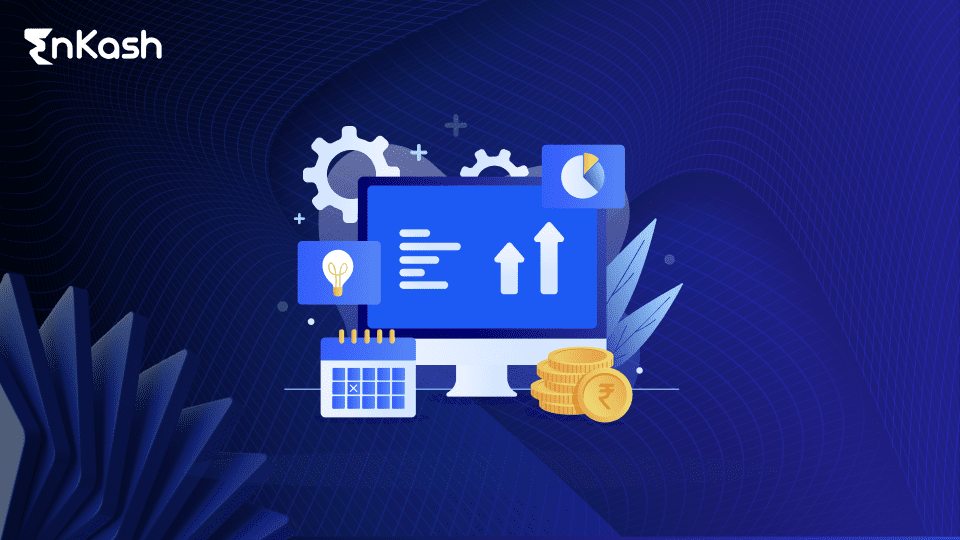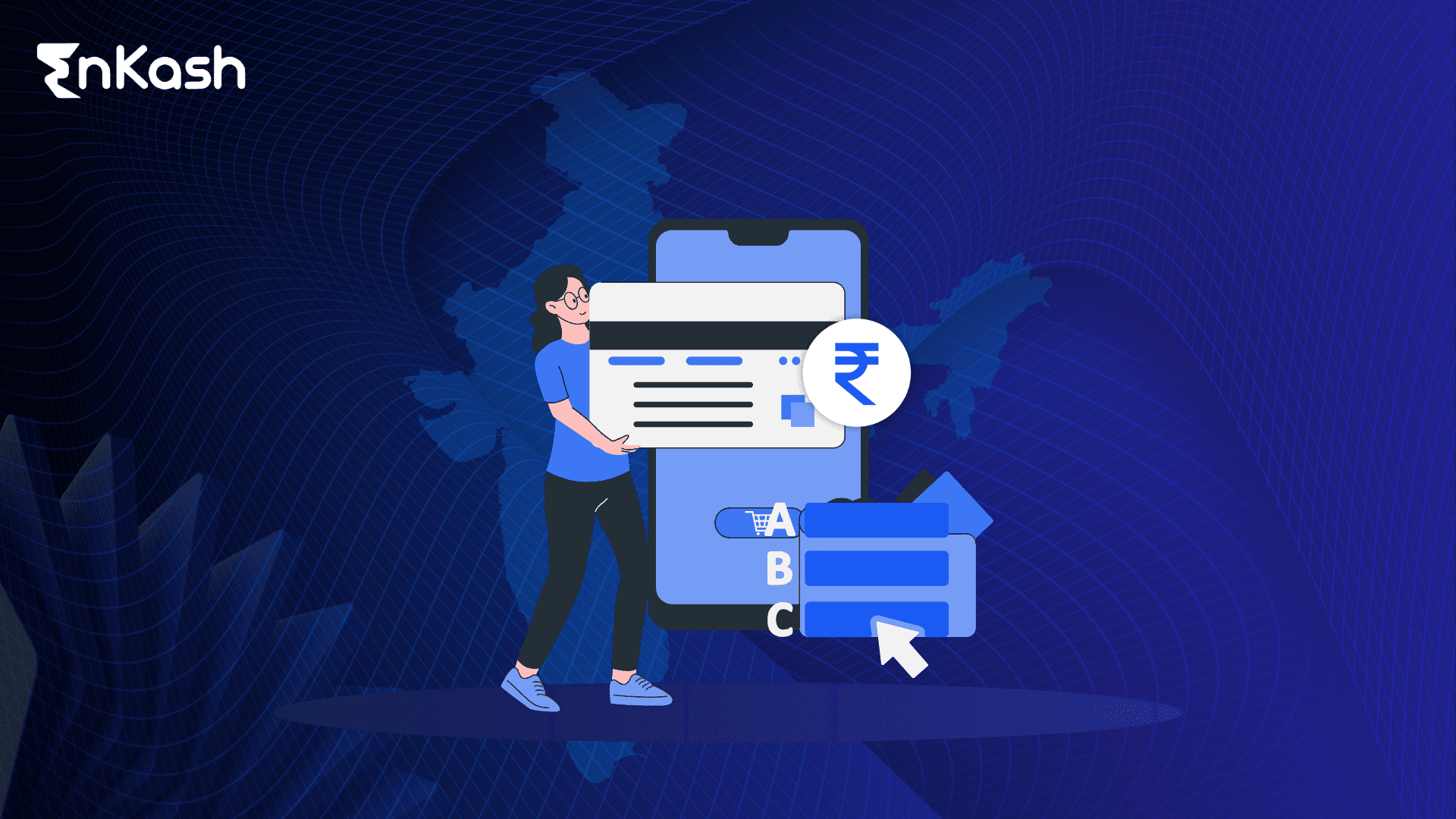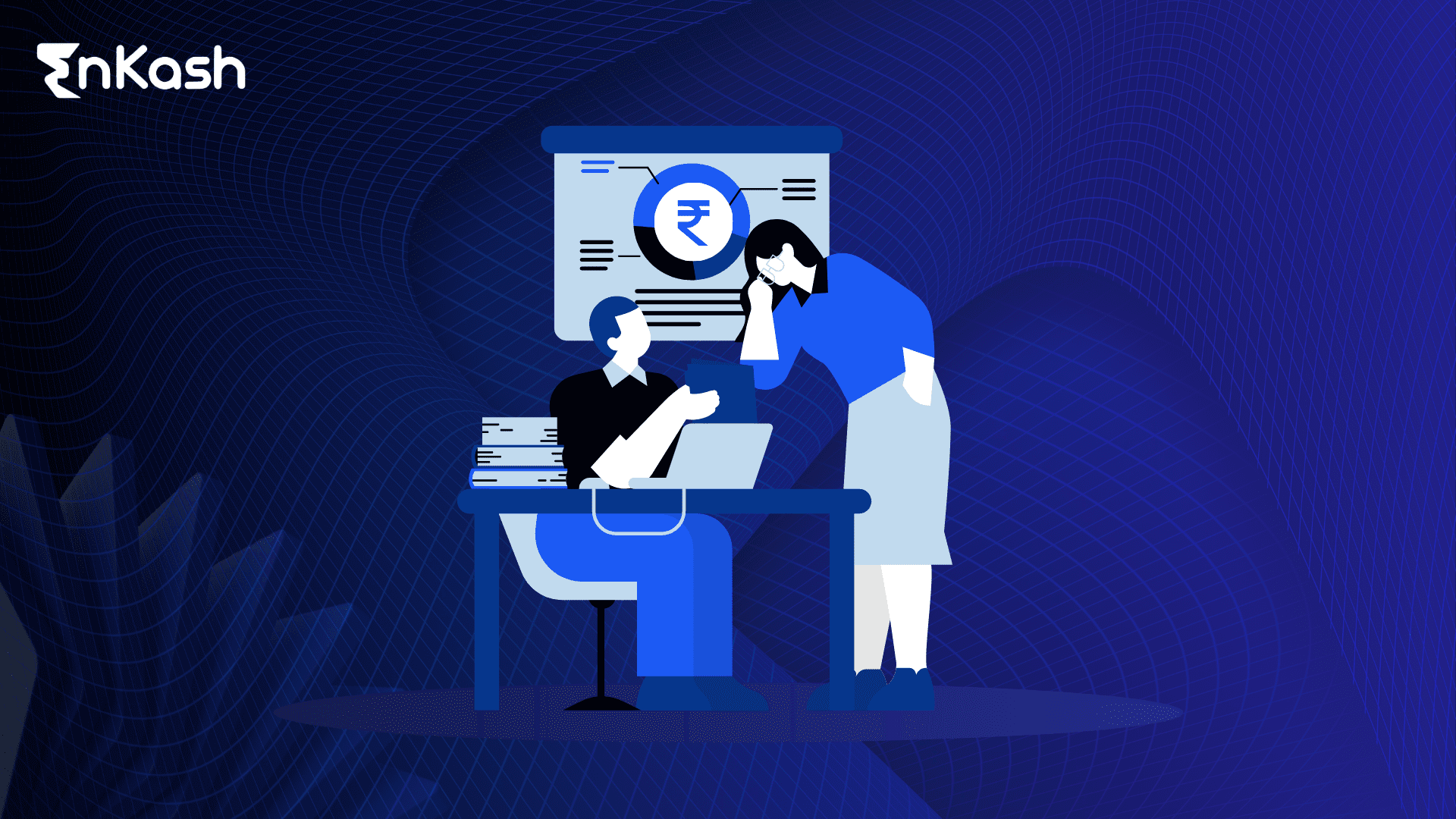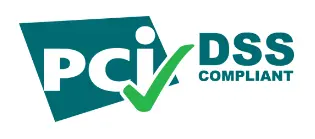One key component of evolution in the fintech space is the rapid change in different spheres of business workflow. Electronic receipts are one such workflow. E-receipts are electronic copies of receipts that are sent directly to customers after the payment is made. These receipts are convenient to store unlike physical receipts and are easy to access whenever needed. These digital alternatives to physical paper receipts have changed how businesses and consumers manage transactions, bringing forth a new era of convenience, efficiency, and security. As companies increasingly shift toward digital platforms, understanding electronic payment receipts’ importance, benefits, and workings becomes crucial.
What is an Electronic Receipt?
An electronic payment receipt is a digital document that confirms the completion of a financial transaction. Unlike traditional paper receipts, electronic receipts are generated and sent electronically—often via email, SMS, or through a mobile app—immediately after a purchase or payment is made. These receipts serve as proof of payment and contain essential details such as the amount paid, the date of the transaction, the merchant’s information, and a unique transaction ID.
Electronic receipts are not only used for in-person transactions but are also integral to e-commerce, online banking, and mobile payments. They are a key component in the digital payment ecosystem, ensuring transparency and record-keeping in a world that increasingly values paperless solutions.
The digital receipts market is forecast to experience substantial growth, reaching $293 billion by 2030. This expansion is attributed to a compound annual growth rate of 7.5% from 2024 to 2030, primarily driven by the following factors:
- Consumers are increasingly using online shopping apps and websites, driving the demand for digital receipts
- The surge in food delivery services has led to a corresponding increase in digital receipts
- The convenience and efficiency of online payments and delivery options have contributed to the adoption of digital receipts
- The growing preference for online shopping over traditional retail has boosted the need for digital receipts
- Retailers are increasingly adopting digital receipts to streamline their operations and reduce costs
How E-Receipts Work?
Step 1 – The Payment Process
The process of generating an electronic payment receipt begins when a customer makes a payment, either online or in person. This payment can be made using various methods, such as credit or debit cards, mobile wallets, or bank transfers. Once the payment is processed, the payment gateway or point-of-sale (POS) system communicates with the business’s accounting software or receipt management system.
Also Read: Ach Debit Return Charges
Step 2 – Receipt Generation
Once the payment is confirmed, the system automatically generates an electronic payment receipt. This receipt includes all relevant transaction details, such as the amount paid, the date and time of the transaction, the payment method used, and the merchant’s details. Depending on the system, the receipt may also include additional information, such as the location of the transaction and a unique transaction ID.
Step 3 – Delivery to the Customer
After the receipt is generated, it is delivered to the customer through their preferred communication channel. Most commonly, this is done via email, but it can also be sent via SMS, through a mobile app, or made available for download on the merchant’s website. The customer can then save, print, or forward the receipt as needed.
Step 4 – Integration with Business Systems
For businesses, electronic payment receipts can be integrated with various systems, such as accounting software, customer relationship management (CRM) systems, and inventory management systems. This integration allows for seamless data flow, ensuring that all transaction details are accurately recorded and easily accessible. It also enables businesses to automate certain processes, such as generating financial reports or sending follow-up emails to customers.
Also Read: Best Accounting Software in India
Step 5 – Storage and Retrieval
One of the key advantages of electronic payment receipts is the ease with which they can be stored and retrieved. Receipts are typically stored in a secure digital database, which can be accessed by both the business and the customer. This digital storage eliminates the need for physical filing systems, reducing clutter and making it easier to organize and search for specific receipts.
Importance of Electronic Payment Receipts
The following are the importance of payment E-Receipts
Proof of Transaction
Electronic payment receipts provide an official record of a financial transaction, serving as proof of purchase for both the consumer and the business. This is especially important in cases where disputes arise, such as when a customer needs to return a product or if there is an issue with the payment process. The digital nature of these receipts ensures that they can be easily retrieved, reducing the risk of lost or misplaced documents.
Legal Compliance
For businesses, maintaining accurate records of transactions is not just good practice; it’s often a legal requirement. Many jurisdictions mandate that businesses keep records of all transactions for a certain period, and electronic receipts make this task more manageable. They can be stored in digital databases, easily accessible for audits or legal reviews, ensuring that businesses remain compliant with local laws and regulations.
Customer Trust
In any business relationship, all parties involved must trust each other. When a business issues an electronic receipt, it demonstrates professionalism and transparency, which can enhance customer trust. Customers are more likely to feel secure knowing they have a reliable record of their transactions, which can lead to increased customer loyalty and repeat business.
Environmental Impact
The shift from paper to electronic receipts has a significant positive impact on the environment. By reducing the need for paper, businesses contribute to the conservation of natural resources and reduce their carbon footprint. This eco-friendly approach is increasingly appealing to consumers who are conscious of their environmental impact, further enhancing the reputation of businesses that adopt electronic receipts.
Benefits of Electronic Payment Receipts
1. Convenience
One of the most significant benefits of electronic payment receipts is the convenience they offer. Unlike paper receipts, which can be lost or damaged, electronic receipts provide a secure and convenient way to store and access purchase information. Whether through an email inbox or a mobile app, consumers can quickly retrieve their receipts without the hassle of sorting through physical papers.
2. Cost-Effective
For businesses, issuing electronic payment receipts is more cost-effective than traditional paper receipts. The costs associated with printing, storing, and managing paper receipts can add up over time. By transitioning to electronic receipts, businesses can reduce these expenses while also minimizing the need for physical storage space.
3. Enhanced Security
Electronic payment receipts provide superior security measures that paper receipts cannot replicate. Digital receipts can be encrypted, protecting sensitive information from unauthorized access. Additionally, because they are stored electronically, there is less risk of them being lost or tampered with. This increased security is particularly important in an era where data breaches and fraud are significant concerns.
4. Improved Data Management
Electronic receipts simplify the process of managing and analyzing transaction data. Businesses can integrate digital receipts into their accounting software, making it easier to track sales, monitor inventory, and analyze consumer behavior. This improved data management can lead to better decision-making and more efficient business operations.
5. Personalized Customer Experience
Digital receipts can be customized and personalized, offering businesses an opportunity to enhance the customer experience. For example, a receipt can include personalized messages, special offers, or recommendations based on the customer’s purchase history. This level of personalization can help businesses build stronger relationships with their customers and drive additional sales.
Make Your Business Switch To Electronic Payment Receipt
Challenges and Considerations of E-Receipts
While electronic payment receipts offer numerous benefits, there are also some challenges and considerations that businesses and consumers need to be aware of.
1. Data Privacy and Security
As with any digital system, data privacy and security are critical concerns. Businesses must ensure that their systems are secure and that sensitive customer information is protected. This includes implementing encryption, regularly updating software, and complying with data protection regulations such as the General Data Protection Regulation (GDPR).
2. Technical Issues
Technical issues can arise with electronic payment receipts, such as system outages, software bugs, or compatibility problems. These issues can disrupt the receipt generation process, leading to delays or errors in issuing receipts. To mitigate these risks, businesses should have contingency plans in place and invest in reliable, well-supported software.
3. Customer Adoption
While electronic payment receipts are becoming increasingly popular, some customers may still prefer traditional paper receipts or may be hesitant to adopt digital receipts due to concerns about privacy or technology. Businesses should provide clear information about the benefits of electronic receipts and offer customers the option to choose their preferred receipt format.
Future of Electronic Payment Receipts
As technology continues to advance, the future of electronic payment receipts looks promising. Emerging technologies such as blockchain, artificial intelligence (AI), and the Internet of Things (IoT) are likely to further enhance the functionality and security of digital receipts.
2. Artificial Intelligence and Machine Learning
AI and machine learning technologies could be used to analyze the data contained in electronic payment receipts, providing businesses with valuable insights into consumer behavior and spending patterns. This data could be used to personalize marketing efforts, optimize pricing strategies, and improve customer service. AI could also be used to detect and prevent fraudulent transactions, further enhancing the security of digital receipts.
3. Internet of Things (IoT)
The integration of IoT devices into the payment process could lead to new ways of generating and delivering electronic payment receipts. For example, smart appliances could automatically generate receipts for purchases made through in-app purchases or subscriptions. Additionally, IoT-enabled POS systems could offer new ways of personalizing and delivering receipts to customers, such as through connected smartwatches or voice assistants.
Conclusion
Electronic payment receipts represent a significant advancement in the way we handle transactions, offering numerous benefits for both businesses and consumers. From increased convenience and cost savings to enhanced security and environmental sustainability, the advantages of digital receipts are clear. However, businesses must also be mindful of the challenges and considerations associated with electronic payment receipts, such as data privacy and customer adoption.
As technology continues to evolve, electronic payment receipts are likely to become even more integral to our daily lives, offering new features and capabilities that further streamline and enhance the payment process. For businesses, staying ahead of these trends and adopting electronic payment receipts can provide a competitive edge, improve customer satisfaction, and contribute to long-term success in an increasingly digital world.
Frequently Asked Questions
How do I get an electronic receipt?
To receive an electronic receipt, you typically need to provide your email address or mobile number at the time of purchase. Once the transaction is completed, the receipt will be sent to you via email, or SMS, or made available for download through the merchant’s app or website.
What is an electronic transfer receipt?
An electronic transfer receipt is a digital document that confirms the successful transfer of funds between accounts. This type of receipt is commonly used in bank transfers, online payments, and mobile wallet transactions. It typically includes details such as the amount transferred, the date of the transaction, the recipient’s details, and a unique transaction ID.
How do I get a receipt after online payment?
After making an online payment, you will usually receive an electronic receipt via email or SMS. Some platforms also provide an option to download the receipt directly from your account or transaction history page. If you don’t receive a receipt, you can request one from the merchant or payment platform by providing transaction details.
What are payment receipts?
Payment receipts are documents that serve as proof of payment for a purchase or service. They provide essential details about the transaction, such as the date, the amount paid, and the merchant or service provider’s information. Payment receipts can be physical (paper) or electronic, with the latter becoming increasingly popular due to convenience and environmental benefits.
Are electronic payment receipts legally valid?
Yes, electronic payment receipts are legally valid and can serve as proof of a transaction in the same way paper receipts do. They are often used for tax purposes, refunds, or when disputes arise. Businesses must ensure that their digital receipts meet legal standards, such as including all necessary transaction details.
Can I use an electronic payment receipt for returns or exchanges?
Yes, electronic payment receipts can be used for returns or exchanges. Most retailers accept digital receipts as proof of purchase, provided that the receipt includes all relevant details, such as the date of purchase and the item bought. Some businesses may even offer an easier return process for customers with electronic receipts.
What are the benefits of using electronic payment receipts over paper receipts?
Electronic payment receipts offer numerous benefits over traditional paper receipts, including:
– Convenience: Easily stored and accessed digitally
– Cost savings: Reduces printing and storage costs for businesses
– Environmental impact: Helps reduce paper waste and promotes eco-friendly practices
– Security: Digital receipts can be encrypted, protecting sensitive information
What happens if I lose my electronic payment receipt?
If you lose your electronic payment receipt, you can typically retrieve it from your email, SMS inbox, or the merchant’s app or website. Many businesses also keep records of transactions in their systems, so you may be able to request a copy of the receipt by contacting customer service and providing transaction details.
Are electronic payment receipts secure?
Yes, electronic payment receipts are generally secure, especially when encrypted or stored on secure platforms. Businesses must follow data protection regulations to ensure that sensitive customer information is protected. However, customers should also be cautious about sharing their digital receipts or storing them on unsecured devices.
Can electronic payment receipts be customized?
Yes, businesses can customize electronic payment receipts to include personalized messages, promotions, or recommendations based on customer purchase history. Customization offers an opportunity to enhance the customer experience and strengthen relationships between businesses and consumers.













